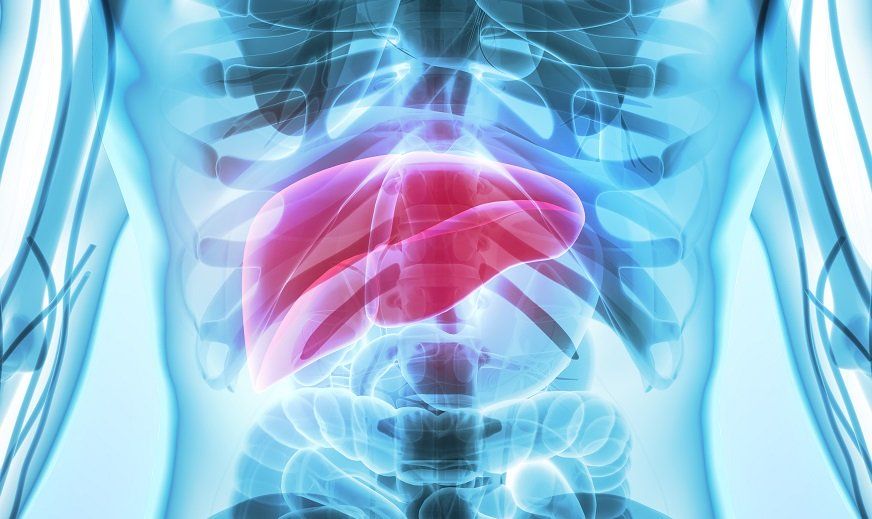HBV Viral Load, Surface Antigen Positivity Not Independently Associated with NAFLD
HBV DNA and HBsAg were not significantly associated with NAFLD in patients with treatment-naïve HBV, but age, BMI, comorbidities, and certain metabolic laboratory parameters were.
Credit: Adobe Stock

Findings from a recent study are shining light on predictors of nonalcoholic fatty liver disease (NAFLD) in patients with treatment-naïve chronic hepatitis B virus (HBV) infection.1
Although results showed no significant association between HBV DNA and NAFLD, age, body mass index (BMI), comorbid conditions, and metabolic laboratory parameters were identified as independent predictors of NAFLD.1
“Although some studies have revealed factors associated with hepatic steatosis in chronic hepatitis B patients, there is still limited data on NAFLD in chronic HBV infection,” Gulsah Tuncer, of the department of infectious diseases and clinical microbiology at Bilecik Training and Research Hospital in Turkey, and colleagues wrote.1
Although the exact cause of NAFLD is unknown, obesity, type 2 diabetes, abnormal levels of fats in the blood, and metabolic syndrome are commonly recognized as risk factors. Additionally, the American Liver Foundation cites certain infections like hepatitis C virus as a less common reason why some people may develop NAFLD. However, the potential causative relationship between NAFLD and HBV infection is not well understood.2
To determine the predictors of NAFLD in patients with treatment-naïve chronic HBV, investigators retrospectively examined data from consecutive patients seen at the Haseki Training and Research Hospital between October 1, 2021, and September 31, 2022. Chronic HBV infection was defined by positive serum hepatitis B surface antigen (HBsAg) for ≥ 6 months, while NAFLD was defined as the presence of hepatic steatosis detected by radiologic imaging or histologic evaluation and the absence of significant alcohol consumption, prolonged use of a steatogenic drug, or other secondary causes of hepatic fat accumulation.1
Patients with significant alcohol consumption, prolonged steatogenic drug use, malignancy, and monogenic hereditary disorders were excluded, as well as those co-infected with hepatitis D virus, hepatitis C virus, or human immunodeficiency virus. In total, 457 patients with treatment-naïve chronic HBV infection were included in the study.1
Among the cohort, 244 (53.4%) patients were male, the median age was 43 years, and the median BMI was 26.3. Investigators pointed out the most common underlying diseases were hypertension (16.4%), diabetes mellitus (9.6%), hyperlipidemia (3.1%), and coronary artery disease (2.6%). Additionally, 12 (2.6%) patients were hepatitis B e antigen (HBeAg) positive.1
Investigators observed NAFLD in 162 (35.4%) patients, noting they were older than patients without NAFLD (47 years vs 42 years; P <.001) and generally had more underlying diseases (39.5% vs 21.4%; P <.001). Specifically, diabetes mellitus (16% vs 6.1%; P = .001), hypertension (22.2% vs 13.2%; P = .013), and hyperlipidemia (5.6% vs 1.7%; P = .022) were more common in patients with NAFLD than without NAFLD.1
In univariate analysis, age (P <.001), BMI (P = .001), hypertension (P = .014), diabetes mellitus (P = .001), hyperlipidemia (P <.030), hemoglobin (P = .009), platelet count (P = .032), LDL (P = .001), HDL (P <.001), and triglyceride (P <.001) were predictors of NAFLD in patients with chronic hepatitis B. However, in a multivariate regression model, only age (P <.001), BMI (P = .033), hemoglobin (P = .004), platelet count (P = .004), and HDL (P = .007) were statistically significant.1
Investigators highlighted the single-center study design, reliance on ultrasonography to identify NAFLD, lack of consideration for histopathological examination, and potential lack of generalizability of the results as limitations to the study.1
“Non-alcoholic fatty liver disease was observed in about one-third of patients with chronic HBV infection and was positively associated with older age, higher BMI, presence of comorbid conditions including diabetes mellitus, increased levels of metabolic laboratory parameters, especially serum triglyceride and LDL, and decreased HDL,” investigators concluded.1 “However, neither HBV DNA levels nor HBeAg positivity were independent predictors for NAFLD.”
References:
- Tuncer G, Geyiktepe-Guclu C, Bayramlar OF, et al. Independent predictors for non-alcoholic fatty liver disease in patients with treatment-naïve chronic hepatitis B. Rev. Assoc. Med. Bras. https://doi.org/10.1590/1806-9282.20231036
- American Liver Foundation. NASH Causes & Risk Factors. Liver Diseases. January 18, 2024. Accessed April 9, 2024. https://liverfoundation.org/liver-diseases/fatty-liver-disease/nonalcoholic-steatohepatitis-nash/nash-causes-risk-factors/
2 Commerce Drive
Cranbury, NJ 08512
All rights reserved.